 Choosing Your Battle is the first official step in the project cycle. It pushes youth to look deeper at the community they have chosen to serve. It helps them to understand it in a new way. Youth will then begin to dive into the things about their community that are wonderful and those that are challenging. Working together, they will identify which challenges are most important to them. They will finish choosing their battle by mapping the people and community assets that could help them.
Choosing Your Battle is the first official step in the project cycle. It pushes youth to look deeper at the community they have chosen to serve. It helps them to understand it in a new way. Youth will then begin to dive into the things about their community that are wonderful and those that are challenging. Working together, they will identify which challenges are most important to them. They will finish choosing their battle by mapping the people and community assets that could help them.
Watch the video below for a short overview of Choose Your Battle.
In the Guidebook, facilitators will find the following:
- A list of the crucial questions youth will need answers to before they are finished choosing their battle
- Several activities to choose from to help youth look at and understand their community in a new way
- A variety of strategies to help youth identify issues and assets in their community
- Activities to support youth in narrowing those issues to their niche as well as ensuring that what they identified is a real need
- Engaging ways for youth to identify potential partners
- And an evaluation checkpoint, which allows youth to be sure they are ready to move on and reminds them to reflect and celebrate their accomplishments
Supplemental Resources
The supplemental resources below support the downloadable Guidebook and are not intended to be used alone.
Handouts
Action Research Handout (pg 65-66)
Guidebook Section: Proofing the Need (page 32)
From The Institute for Community Research’s Youth Participatory Action Research Curriculum, this handout prompts youth to think about youth participatory action research and how it differs from traditional research.
Youth Self-Assessment Handout—Choose Your Battle
Don’t forget to reflect and evaluate before you move on.
Videos
![]() Selective Attention Test
Selective Attention Test
Guidebook Section: Selective Attention Test (Page 26)
The original, world-famous awareness test from Daniel Simons and Christopher Chabris. This video and activity will start conversations about selective attention and how it affects how we look at the community.
Other Resources to Identify Issues and Assets in Your Community
Implementing Photovoice in Your Community
Photovoice can empower youth to be advocates for community health by taking photographs of their community to better understand an issue and emphasize community action. This resource provides an overview, checklist and examples of implementing a photovoice activiity. From the Community Tool Box, Center for Community Health and Development at University of Kansas.
Walking Neighborhood Survey
The Walking Neighborhood Survey is an example of an activity youth can engage in to survey their community. This resource is specifically designed for a land use survey, but youth can develop their own criteria for what to look for. Created by Michigan State University Extension.
Activities to Define Issue
YPAR stands for youth participatory action research. The YPAR Hub contains multiple youth-led activities on defining issues and choosing an issue. The YPAR Hub started through an ongoing partnership between the University of California, Berkeley and San Francisco Peer Resources.
Issue Identification (pg 103)
Use the resources starting on page 103 as guidance to explore community issues. List possible issues on a whiteboard and visually represent the connections between issues. Identify all possible topics that youth might want to address. From the Institute for Community Research’s Youth Participatory Action Research Curriculum.
Web-Based Databases for Community Assessment
The following resources provide data and other information to assist the group in assessing the community assets and issues.
County Health Data:
County Health Rankings
County Health Rankings provides a yearly snapshot of how health is influenced by where we live, learn, work and play to identify opportunities to improve health. The County Health Rankings program is a collaboration between the Robert Wood Johnson Foundation and UW- Madison Population Health Institute.
Nutrition and Physical Activity:
Wisconsin Health Atlas
The Wisconsin Health Atlas provides groups working to improve community health with local data to inform and evaluate their work. The resource contains information about individual behaviors, policies, systems, and environments that impact health. The Wisconsin Health Atlas is funded by the Wisconsin Partnership Program.
Nutrition, Physical Activity and Obesity: Reports and Data
This Wisconsin Department of Health Services webpage lists various national and state-level data resources for nutrition, physical activity and obesity.
Wisconsin Food Security Project
The Wisconsin Food Security Project provides localized information about the food security infrastructure in Wisconsin. The website provides different ways to access, interact and display local characteristics, and local resources related to food security. The project is managed by the Applied Population Lab at the University of Wisconsin – Madison.
Feeding America’s Map the Meal Gap
The Map the Meal Gap database provides national to county-level data about food insecurity. The interactive map is created by Feeding America.
Farm Fresh Atlas
The Farm Fresh Atlas provides a map of Wisconsin farms, farmers’ markets, restaurants, stores and other businesses that sell local food and use sustainable production and business practices. The atlas is created by the REAP Food Group.
Wisconsin Nutrition & Physical Activity: Coalitions by County
The Wisconsin Department of Health Services webpage contains a list of coalitions working in nutrition and physical activity across Wisconsin.
Adolescent and School Health:
Adolescent and School Health Data
The Centers for Disease Control and Prevention Webpage provides a collection, analysis and interpretation of data regarding adolescent and school health, policies and practices.
Additional Resources
Building Community Toolkit
The Building Community tool kit equips youth and adult facilitators with frameworks and tools to identify assets, inspire action, promote youth-adult partnerships and create sustainable changes in communities. Created by the Innovation Center for Community & Youth Development and National 4-H Council.
Youth Leading Community Change: An Evaluation Toolkit
The Youth Leading Community Change: An Evaluation Toolkit includes activities and resources to measure the impact of youth-led community projects. Supported by resources from the Girl Scouts of the USA, the National 4-H Council, the National NFFA Organization, and Evaluation Access.

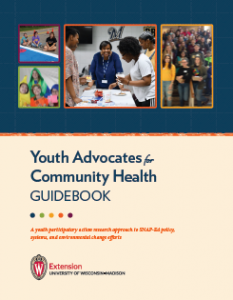
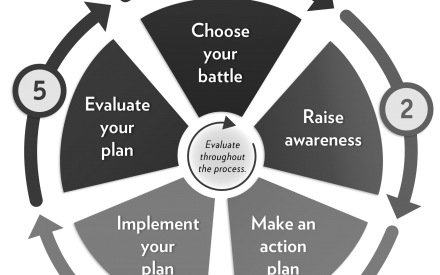 Pre-Planning
Pre-Planning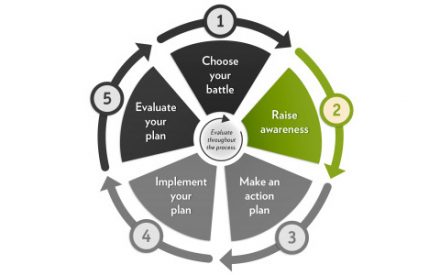 Raise Awareness
Raise Awareness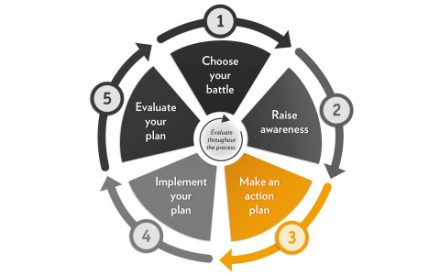 Make Your Action Plan
Make Your Action Plan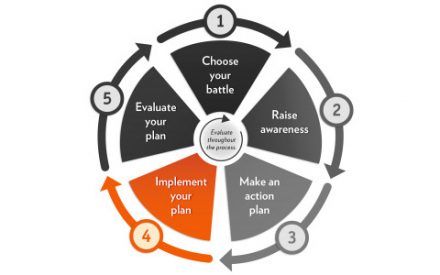 Implement Your Plan
Implement Your Plan


